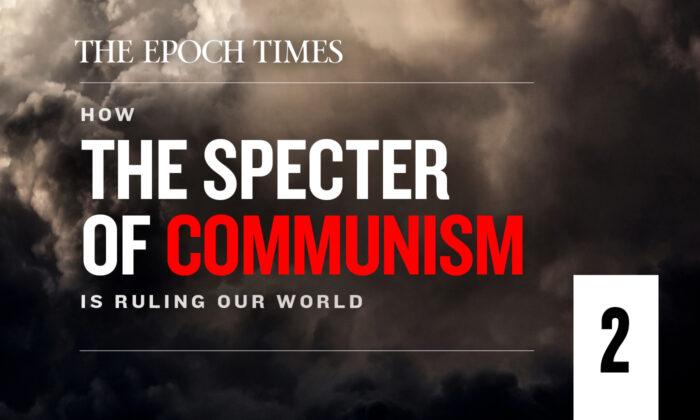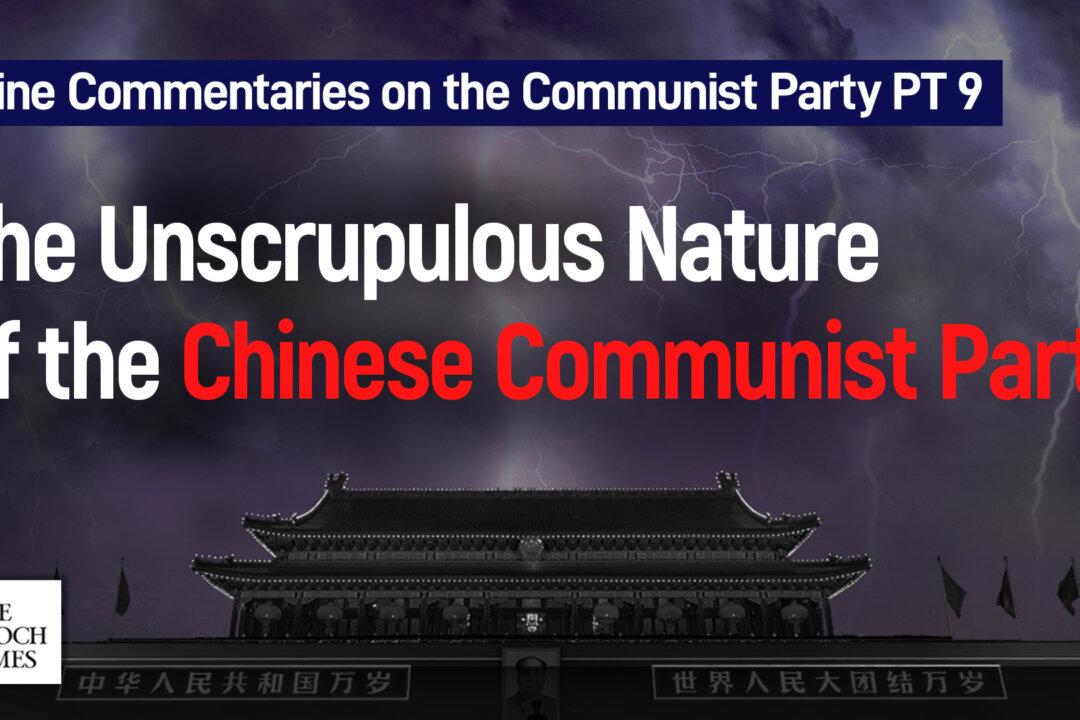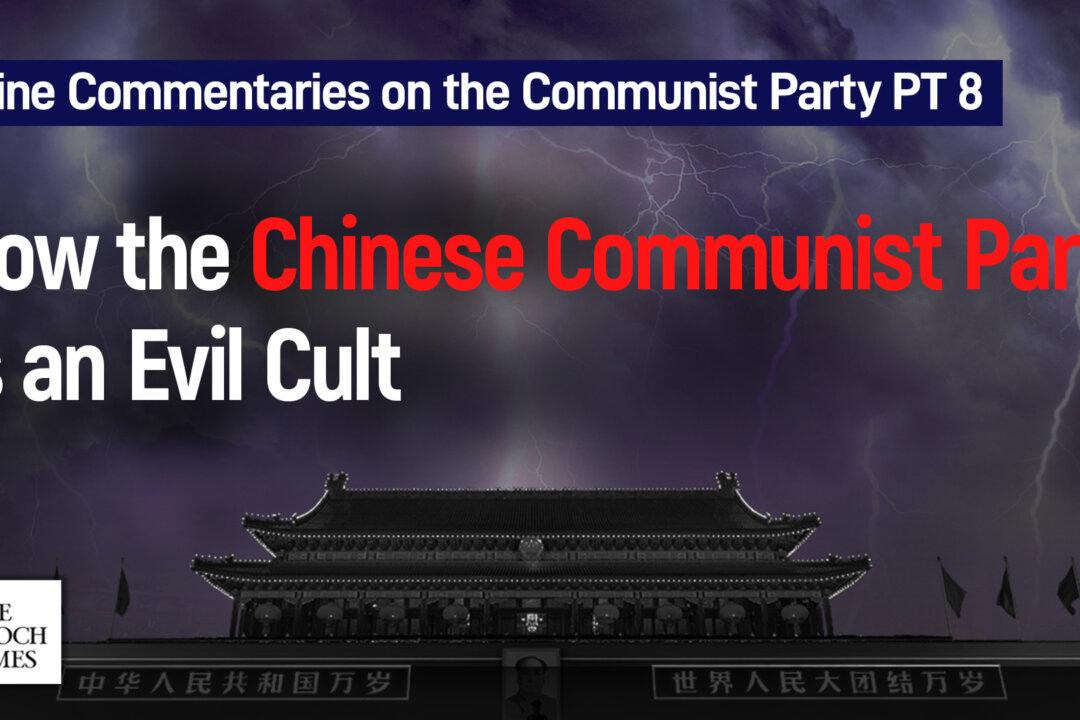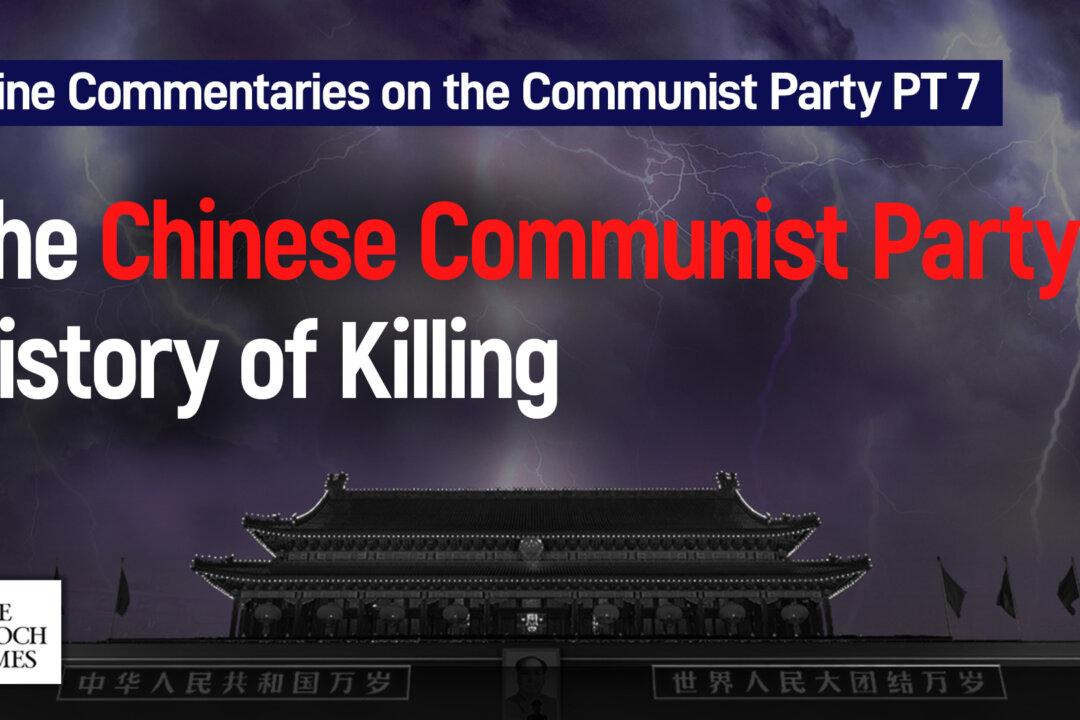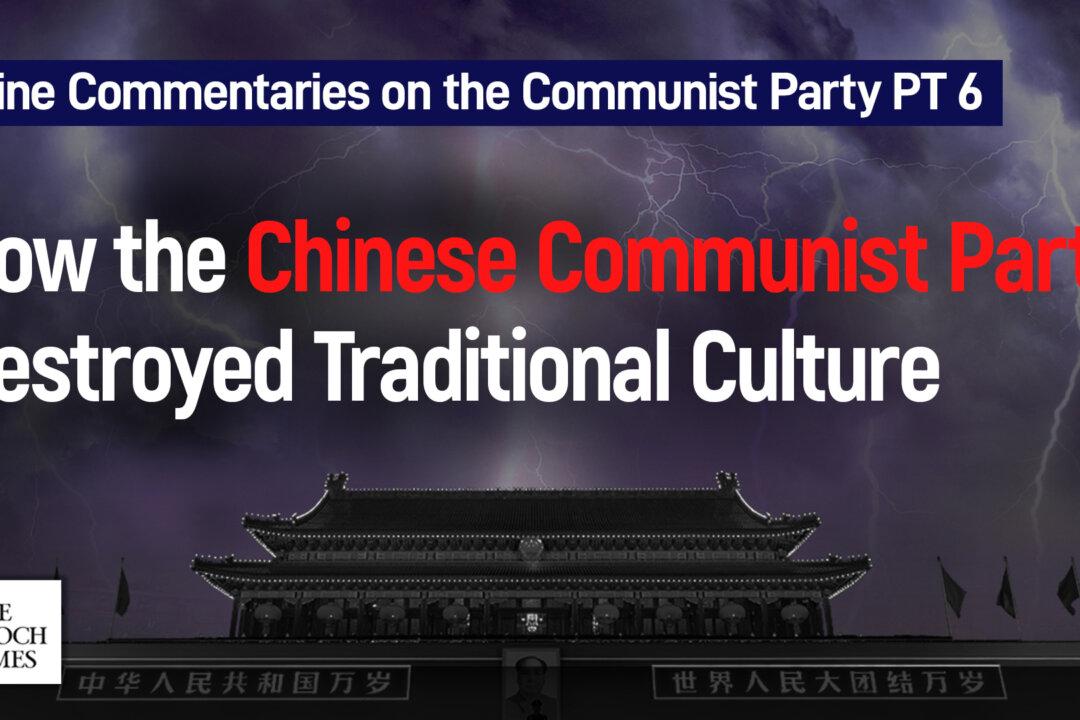Table of Contents
IntroductionIntroduction
Many of the prophecies foretold in orthodox religions have come to pass, as have the predictions made by Nostradamus and those passed down in cultures around the world, from Peru to Korea. In Chinese history, from the Han to the Ming dynasties, there have been surprisingly accurate prophetic texts.These prophecies show us the important truth that history is not a coincidental process, but rather a drama in which the sequence of major events has been pre-established. In the end times, which also could herald the beginning of a new historical cycle, all of the world’s religions are awaiting one thing: the arrival of the Creator in the human realm.
All dramas have a climax. Though the devil has made arrangements to destroy humankind, the Creator has means of awakening the world’s people, helping them to escape the devil’s bondage, and offering them salvation. The ultimate battle between good and evil is unfolding today.
Orthodox religions the world over have foretold that in the era of the Creator’s return, the world would be awash with demons, abominations, and ominous events as humanity lost its moral restraints. This is the world today.
The state of degeneration we face today has been long in the making. It began hundreds of years ago, with the rise of its core driving forces: atheism and the deception of humanity. It was Karl Marx who created an ideology to encompass the deception in all its permutations, and it was Vladimir Lenin who put the theory into brutal practice.
1. Karl Marx’s Satanic Works
Marx wrote many books throughout his life, the best-known being the 1848 The Communist Manifesto and the three volumes of Das Kapital, published between 1867 and 1894. These works form the theoretical basis of the communist movement.So a god has snatched from me my all In the curse and rack of Destiny. All his worlds are gone beyond recall! Nothing but revenge is left to me!
On myself revenge I’ll proudly wreak, On that being, that enthroned Lord, Make my strength a patchwork of what’s weak, Leave my better self without reward!
I shall build my throne high overhead, Cold, tremendous shall its summit be. For its bulwark — superstitious dread, For its Marshall — blackest agony. [1]
In a letter to his father, dated November 10, 1837, Marx described the changes he was experiencing: “A curtain was fallen, my holiest of holies was ripped apart, and new gods had to be set in their place. ... A true unrest has taken mastery of me and I will not be able to calm the excited spirits until I am in your dear presence.” [2]Thus heaven I’ve forfeited, I know it full well. My soul, once true to God, is chosen for hell. [3]
Marx’s family clearly noticed the change in him. In an earlier letter, dated March 2, 1837, his father wrote to him: “Your advancement, the dear hope of seeing your name someday of great repute, and your earthly well-being are not the only desires of my heart. These are illusions I had had a long time, but I can assure you that their fulfillment would not have made me happy. Only if your heart remains pure and beats humanly and if no demon is able to alienate your heart from better feelings, only then will I be happy.” [4]One of Marx’s daughters wrote that when she was young, Marx told her and her sisters many fairy tales. Her favorite was the meandering story of Hans Röckle, a magician who was always short on cash and had no choice but to sell off his lovely puppets to the devil. [5] What Marx sold to the devil in exchange for his success was his very soul.
How so! I plunge, plunge without fail My blood-black saber into your soul. That art God neither wants nor wists, It leaps to the brain from Hell’s black mists.
Till heart’s bewitched, till senses reel: With Satan I have struck my deal. He chalks the signs, beats time for me, I play the death march fast and free. [6]
In the biography Marx, author Robert Payne wrote that the stories Marx told can be taken as allegories for his own life, and that he seemed to be knowingly acting on the devil’s behalf. [7]Marx’s soul turned to evil. In his rage against God, he saw the divine as something to be overthrown. American political philosopher Eric Voegelin wrote: “Marx knew that he was a god creating a world. He did not want to be the creature. He did not want to see the world in the perspective of creaturely existence. ... He wanted to see the world from the point of the coincidentia oppositorum, that is, from the position of God.” [8]
Then the gauntlet do I fling Scornful in the World’s wide open face. Down the giant She-Dwarf, whimpering, Plunges, cannot crush my happiness.
Like unto a God I dare Through that ruined realm in triumph roam. Every word is Deed and Fire, And my bosom like the Maker’s own. [9]
In another verse, he wrote, “I long to take vengeance on the One Who rules from above,” and, “The idea of God is the keynote of a perverted civilization. It must be destroyed.” [10]Soon after Marx died, his housemaid Helene Demuth said she had observed him performing some kind of prayer ritual before a line of candles during his illness. Marx clearly believed in the supernatural. [11]
Throughout human history, great sages taught sentient beings the way to enlightenment and laid the foundations of the world’s civilizations. Jesus Christ established the bedrock of Christian civilization, and Lao Tzu’s wisdom is the foundation of Taoism, a central pillar of Chinese philosophy. In ancient India, Shakyamuni’s teachings led to Buddhism. The origins of their wisdom are a wonder — they obtained their insights from enlightenment on the path of spiritual cultivation, not by ordinary learning.
Since I have found the Highest of things and the Depths of them also, Rude am I as a God, cloaked by the dark like a God. [12]
By the specter’s arrangement, Marx entered the human world and established the cult of communism to corrupt human morality, with the intention that humankind would turn against the divine and doom itself to eternal torment in Hell.2. Marxism’s Historical Context
In order to spread Marxism, the specter laid down various intellectual and social foundations. We will examine these as the context for the rise of communism.Scholars believe that Marx’s theory was deeply influenced by Ludwig Feuerbach, who was an early denier of God’s existence. Feuerbach believed that religion was no more than one’s awareness of “the infinity of consciousness” — that is to say, that people invented God by imagining their own abilities writ large. [13] Feuerbach’s theory sheds some light on how communism emerged and spread. Advances in science, mechanization, material goods, medicine, and leisure created the impression that happiness is a function of material wealth. Therefore, any dissatisfaction must arise from social limitations. It seemed that with material advancement and social change, people would have the means to build a utopia without any need for the divine. This vision is the principal means by which people are lured and then initiated into the cult of communism.
Feuerbach was not the first to reject Christianity and God. David Friedrich Strauss questioned the authenticity of the Bible and the divinity of Jesus in his 1835 book The Life of Jesus Critically Examined. We may trace such atheistic ideas back to the Enlightenment in the seventeenth and eighteenth centuries or, if need be, to the time of the ancient Greeks. But that is not the purpose of this book.
The theory of evolution in the field of natural science and materialism in the field of philosophy provided Marxism with two powerful tools for misleading and recruiting followers.
Society underwent profound changes in Marx’s lifetime. During the first Industrial Revolution, artisanal craftsmanship was replaced with mass production. Technological advancement in agriculture freed up surplus labor to move to cities and toil in factories. Free trade created innovation in sales and marketing. Industrialization fostered the rise of cities and the movement of people, information, and ideas.
Following Marx’s exile from Germany, he moved to France, Belgium, and then England, where he settled down in the Dickensian environment of the London slums. The second Industrial Revolution began in Marx’s later years, bringing electrification, the internal combustion engine, and chemical manufacturing. The invention of the telegraph and the telephone revolutionized communications.
Each change threw society into upheaval as people scrambled to adapt to the new reality amid technological shifts. Many could not keep up, leading to the polarization of haves and have-nots, economic crises, and the like. At the same time, as technology made it possible to transform the natural world on a large scale, humanity’s arrogance grew.
3. The French Revolution
The impact of the 1789 French Revolution was massive; it destroyed the monarchy, overturned the traditional social order, and gave rise to a system of mob rule.Engels said: “A revolution is certainly the most authoritarian thing there is; it is the act whereby one part of the population imposes its will upon the other part by means of rifles, bayonets, and cannon — authoritarian means, if such there be at all; and if the victorious party does not want to have fought in vain, it must maintain this rule by means of the terror which its arms inspire in the reactionists.” [15]
Who’er thou art who passest, pray Don’t grieve that I am dead; For had I been alive this day, Thoud’st been here in my stead! [16]
The Jacobin Club’s policies of economic, political, and anti-religious terror in the French Revolution, were a prelude to the tyranny of communist parties. Foreshadowing the political killings under Lenin and Stalin, the French revolutionaries instituted the Revolutionary Tribunal and set up guillotines in Paris and other communities. Revolutionary committees decided whether a prisoner was guilty, while special agents of the National Convention held authority over the military and administrative subdivisions. The sans-culottes, or proletariat, were considered the most revolutionary class.According to the Law of 22 Prairial, enacted on June 10, 1794, pretrial and defense counsel were banned, and all convictions were required to result in the death penalty. Rumors, inference, and personal judgment, in lieu of evidence, were all considered valid for the purpose of obtaining a verdict. The law’s promulgation greatly expanded the Reign of Terror, with an estimated three hundred thousand to five hundred thousand people jailed as suspects. [17] Likewise, the economic terror of the Jacobins seemed to foreshadow the “war communism” that would be implemented in Russia by Lenin. On July 26, 1793, hoarding grain became an offense punishable by death. The paramilitary forces known as the armées révolutionnaires were empowered to ransack towns and villages, searching for stored grain in houses, barns, and warehouses. Those who were accused of hoarding would be torn apart by mobs or sent to the guillotine. [18]
One of the greatest adversaries of the French revolutionaries was the Catholic faith. During the Reign of Terror, revolutionaries including Pierre Gaspard Chaumette established a form of atheism called the Cult of Reason. It was based on Enlightenment trends and was intended to replace Catholicism. [19] On October 5, 1793, the National Convention abolished the Christian calendar and instituted the Republican Calendar. On November 10, the Notre-Dame de Paris was rechristened the Temple of Reason, in a ceremony featuring a young actress who was styled as the Goddess of Reason, an object of worship for the masses. The dictates of the Cult of Reason were quickly enforced throughout Paris. Within a week, only three Christian churches remained in operation. Anti-religious terror filled Paris. Priests were arrested en masse, and some were executed. [20]
The French Revolution not only provided a model for the Soviet regime established by Lenin, but also was closely connected to the development of Marxism.
François-Noёl Babeuf, a utopian socialist who lived through the French Revolution and was executed in 1797 for his involvement in the Conspiracy of the Equals, advocated the abolition of private property. Marx considered Babeuf to be the first revolutionary communist.
Socialist ideologies continued to make headway in French politics during the nineteenth century. The League of Outlaws, which took Babeuf as its spiritual founder, developed rapidly in Paris. German tailor Wilhelm Weitling joined the league in 1835. Under his leadership, the secret society renamed itself the League of the Just.
Revolutions and insurrections took place one after another following the end of Napoleonic rule, affecting Spain, Greece, Portugal, Germany, various parts of Italy, Belgium, and Poland. By 1848, revolution and war had spread throughout Europe, providing the optimal environment for the spread of communism.
In 1864, Marx and others established the International Workingmen’s Association, also known as the First International, positioning Marx as the spiritual leader of the communist workers’ movement. As leader, Marx worked to create a core group of strictly disciplined revolutionaries who would rally the workers to revolt. At the same time, he found reasons to banish from the organization anyone who disagreed with him. Mikhail Bakunin, the first major Russian Marxist, gathered many recruits for the communist movement, but Marx accused him of being a czarist agent and expelled him from the First International. [21]
4. Communism’s Debut in Paris
The Paris Commune was established following France’s defeat in the Franco-Prussian War of 1870. Though French Emperor Napoléon III had surrendered, the Prussian armies laid siege to Paris before withdrawing. The humiliation of surrender, combined with longstanding unrest among the French workers, led to a general uprising in Paris, and the newly established French Third Republic withdrew to Versailles, leaving a power vacuum in the capital.In March 1871, the Paris Commune began with the rebellion of armed mobs and bandits from the lowest rungs of society, led by socialists, communists, anarchists, and other activists. The movement was affiliated with and heavily influenced by the First International. It aimed at using the proletariat as the agents of revolution to destroy traditional culture and transform the political and economic structure of society.
What followed was killing and destruction on a mass scale as the rebels laid waste to the exquisite relics, monuments, and art of Paris. “What good does it do me for there to be monuments, operas, café-concerts where I have never set foot because I don’t have the money?” wrote French writers Edmond and Jules Goncourt, summarizing the sentiments of those who partook in the destruction. American diplomat Wickham Hoffman, who was stationed in Paris at the time of the Commune, said, “It is bitter, relentless, and cruel; and is, no doubt, a sad legacy of the bloody Revolution of 1789.” American writer and publisher William Pembroke Fetridge described the Commune as “the most criminal [act] the world has ever seen” and “a revolution of blood and violence.” Its leaders were “ruthless desperadoes, ... the refuse of France ... madmen, drunk with wine and blood.” [22]
The struggle between tradition and anti-tradition begun in the French Revolution were now further played out, eight decades later. Louis-Auguste Blanqui, the honorary president of the Paris Commune, said: “Two principles share France: that of legitimacy and that of popular sovereignty. ... The principle of popular sovereignty rallies all men of the future, the masses who, tired of being exploited, seek to smash the framework that suffocates them.” [23]
The extremism of the Commune originated in part from the hate-filled ideas of Henri de Saint-Simon, a utopian socialist who considered the welfare of a country proportionate to its number of workers. He advocated the death of the rich, whom he believed to be parasites.
The Paris Commune pioneered the methods of communist revolution. Monuments including the Vendôme Column commemorating Napoléon were destroyed. Churches were looted, clergy slaughtered, and religious teachings banned from schools. The rebels dressed the statues of saints in modern clothing and affixed smoking pipes to their mouths.
Women as well as men participated in the savagery. Zhang Deyi, a Chinese diplomat who was in Paris at the time, described the situation in his diary: “The rebellious not only included male thugs; women also joined in the rampage. ... They took up lodging in high buildings and feasted on delicacies. But their pleasure was short-lived, as they were unaware of the danger coming to them. On the verge of defeat, they looted and burned buildings. Priceless treasures were reduced to ashes. Hundreds of female rebels were arrested and admitted that it was mainly the women who led the arson.” [25]
The Paris Commune lasted a little over two months before it was suppressed by the French military. On May 23, 1871, before the last line of defense had fallen, the Commune leaders ordered the burning of the Luxembourg Palace (the seat of the French Senate), the Tuileries Palace, and the Louvre. The Paris Opera House, the Paris City Hall, the Ministry of the Interior, the Ministry of Justice, the Palais Royal, and the luxury restaurants and apartment buildings on both sides of the Champs-Elysées were also to be destroyed rather than allowed to fall into the hands of the government.
That evening, Commune members, carrying tar, asphalt, and turpentine, started fires at multiple locations across Paris. The magnificent Tuileries Palace was lost to the flames. Fortunately, the arsonists’ attempt to torch the nearby Louvre was foiled by the arrival of Adolphe Thiers’s troops. [26]
5. First Europe, Then the World
Marx’s updated manifesto made communism even more potent. On July 14, 1889, six years after Marx’s death, thirteen years after the dissolution of the First International, and one hundred years after the French Revolution, the International Workers Congress was revived. Marxists rallied again in what historians refer to as the Second International.The European workers’ movement established itself rapidly, guided by communist slogans like “liberate humanity” and “abolish social classes.” Lenin later said: “The services rendered by Marx and Engels to the working class may be expressed in a few words thus: they taught the working class to know itself and be conscious of itself, and they substituted science for dreams.” [27]
Lies and indoctrination were used to infect popular movements with communist ideology, leading more and more people to accept it. By 1914, there were close to thirty global and local socialist organizations, and countless more trade unions and cooperatives, with more than ten million union members and more than seven million cooperative members. Their ranks were often heavily infiltrated by socialists.
World War I led to the triumph of communism in Russia. At the time of the 1917 revolution that toppled Czar Nicholas II, Lenin was living in Western Europe. By the end of the year, he was back in Russia and had seized power in the October Revolution. Russia was a nation of rich ancient heritage, with a vast population and abundant natural resources. The establishment of the Soviet regime on the territory of the world’s largest country was a huge boon for the world communist movement.
Just as World War I assisted the rise of the Russian communists, World War II prompted the communist movement to proliferate across Eurasia and swallow up China. After World War II, the Soviet Union became a superpower armed with nuclear weapons, giving it the means to promote communism on a global scale.
In the notes for his famous “Iron Curtain” speech, Winston Churchill said: “A shadow has fallen upon the scenes so lately lighted by the Allied victory. Nobody knows what Soviet Russia and its Communist international organization intends to do in the immediate future, or what are the limits, if any, to their expansive and proselytising tendencies.” [29]
During the Cold War, the free world engaged in a fierce confrontation with the communist camp, which had spread across four continents. But even as the nations of the free world remained democratic in form, they gradually turned socialist in essence.
